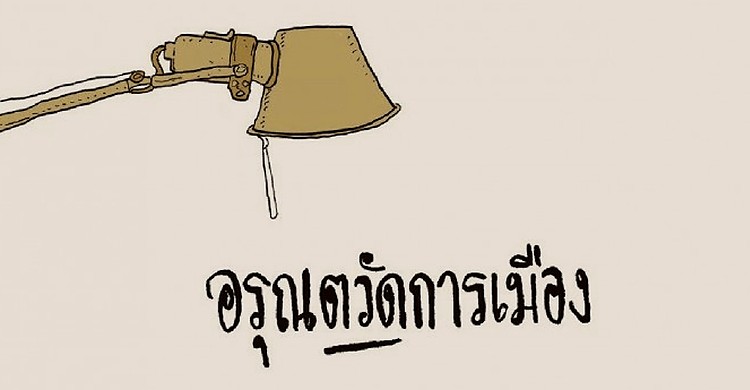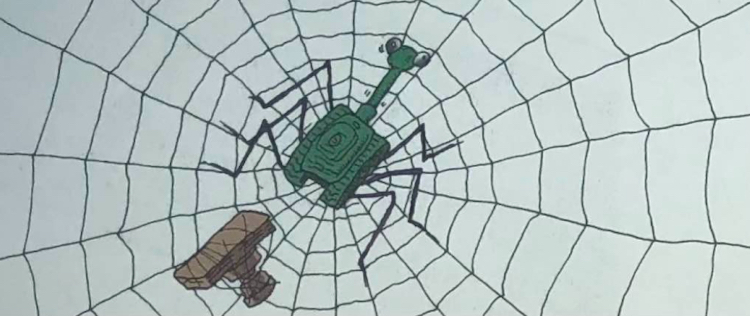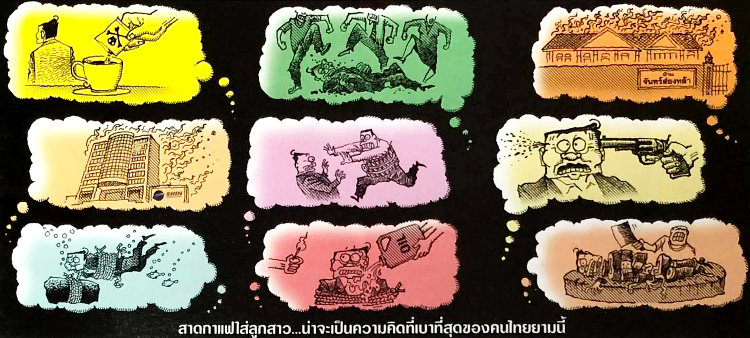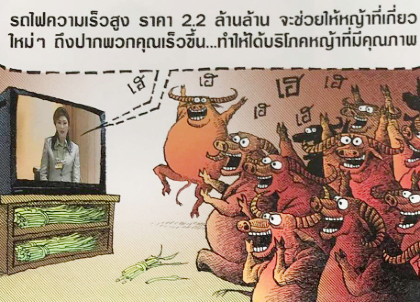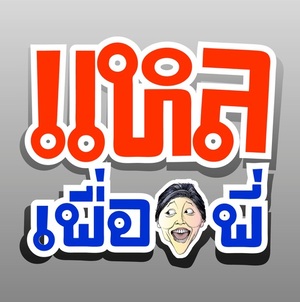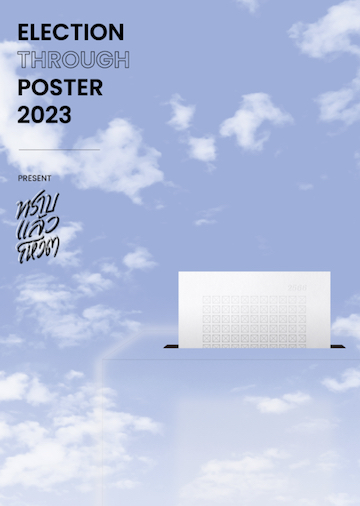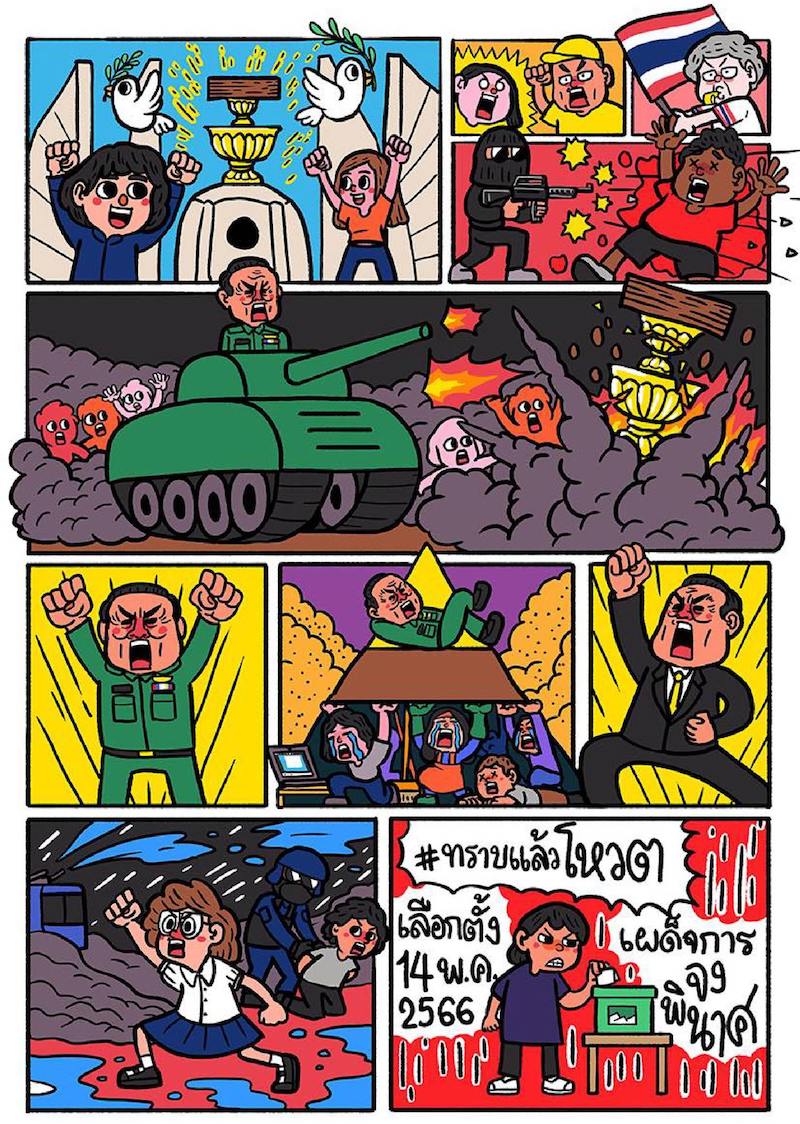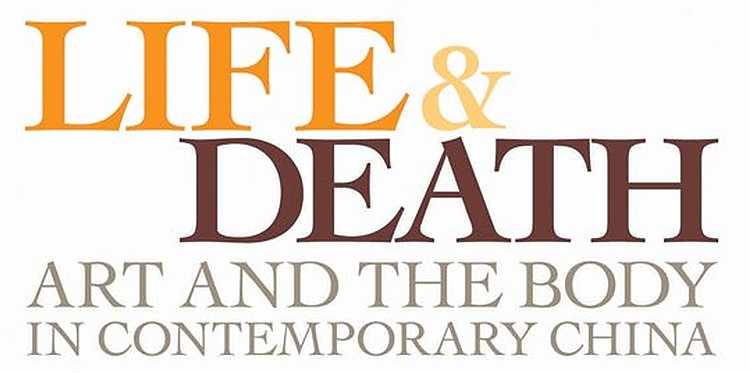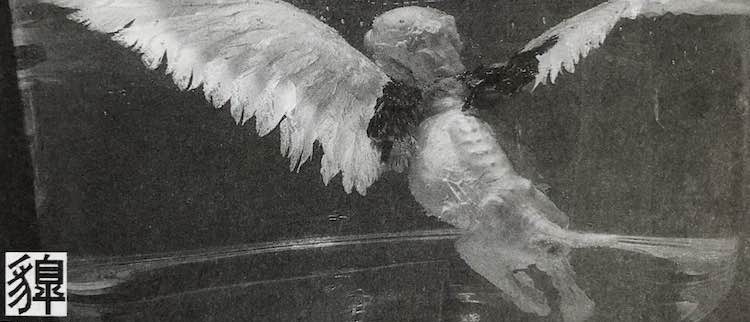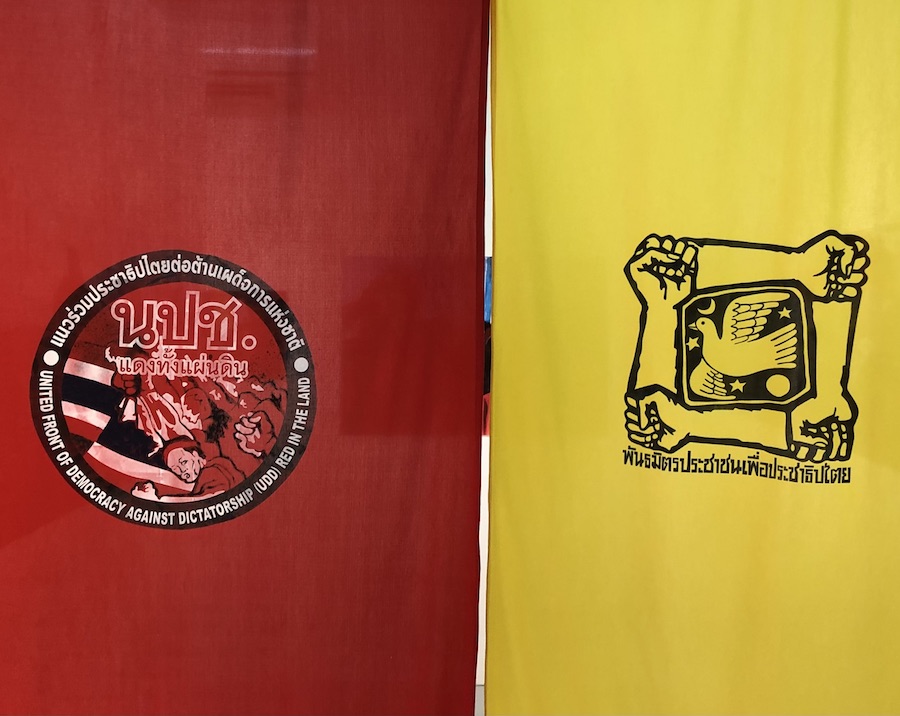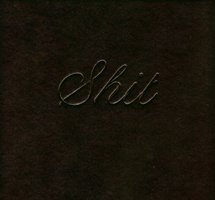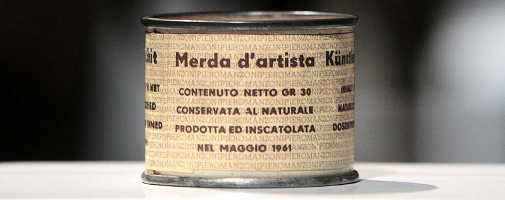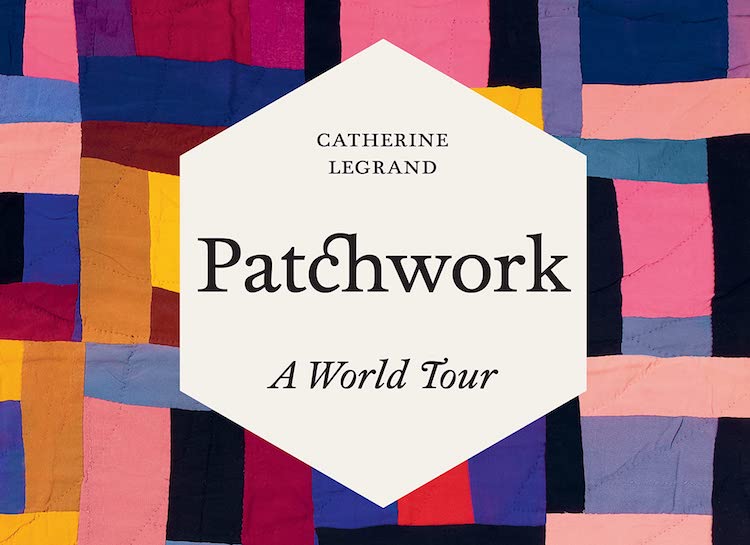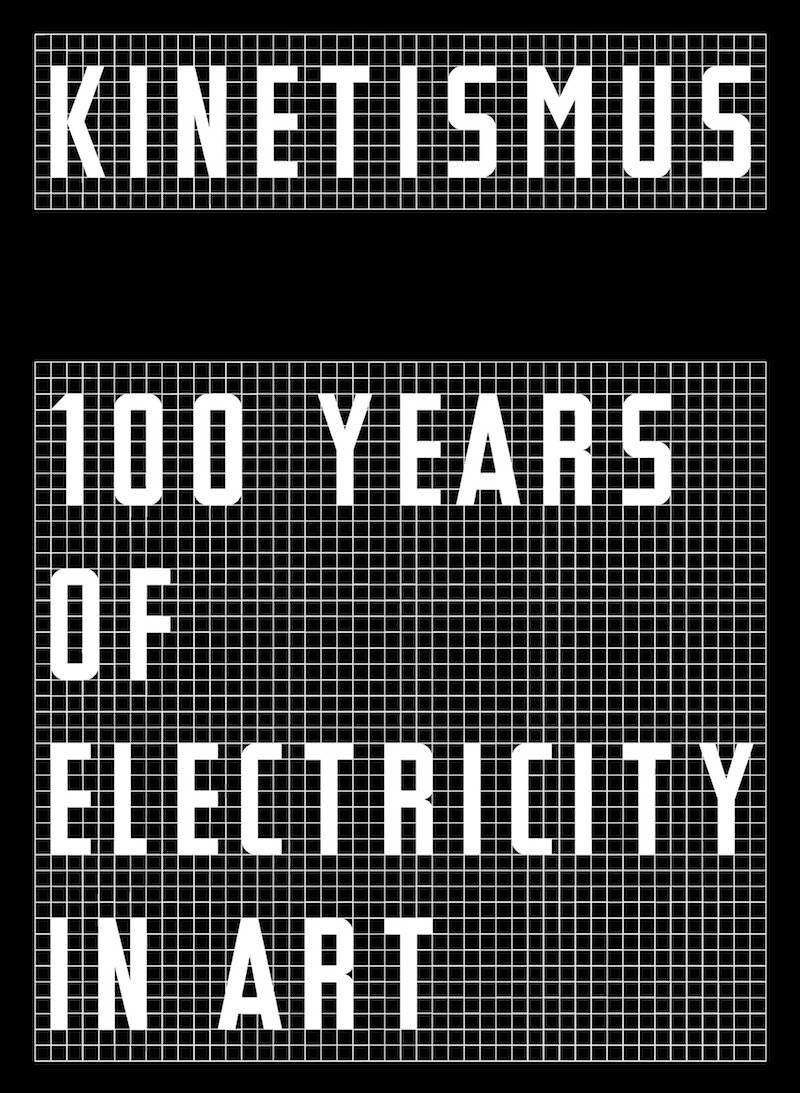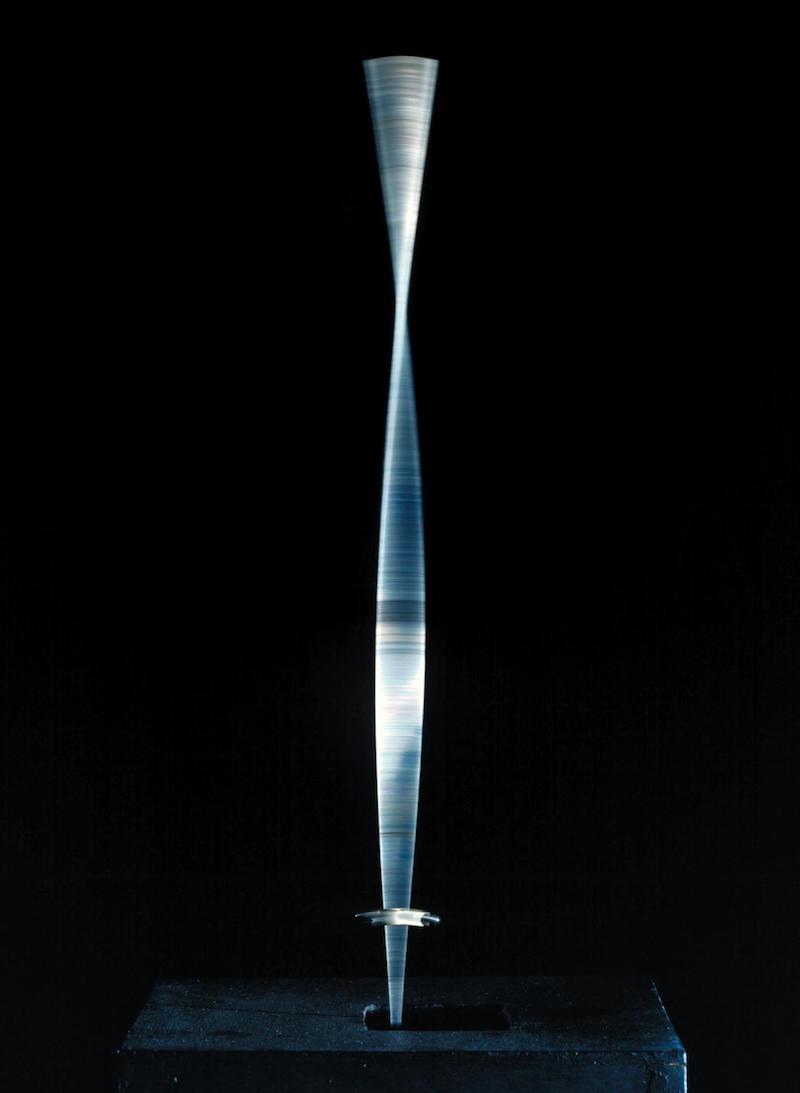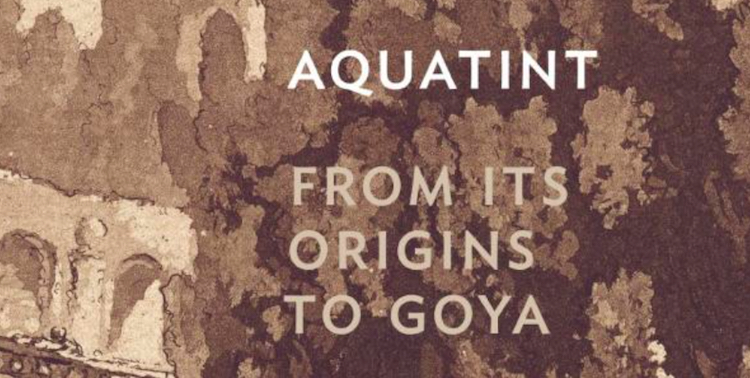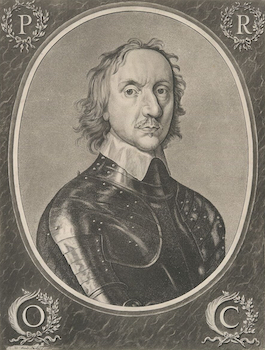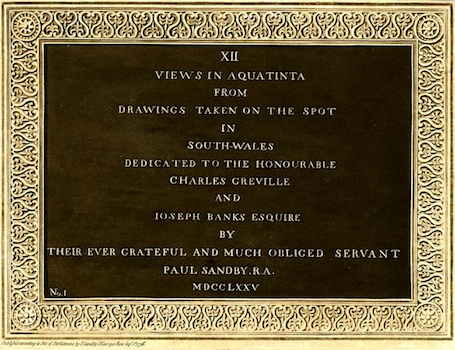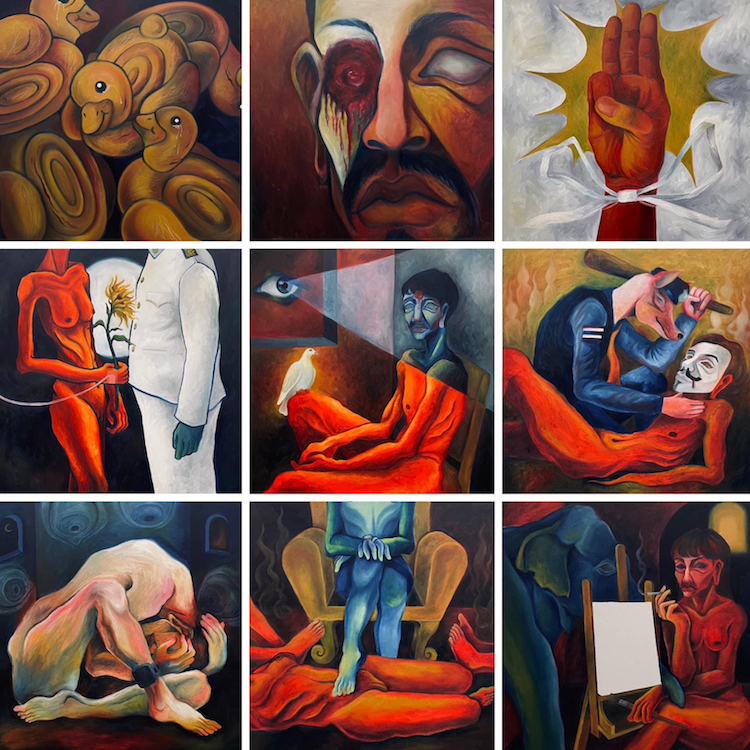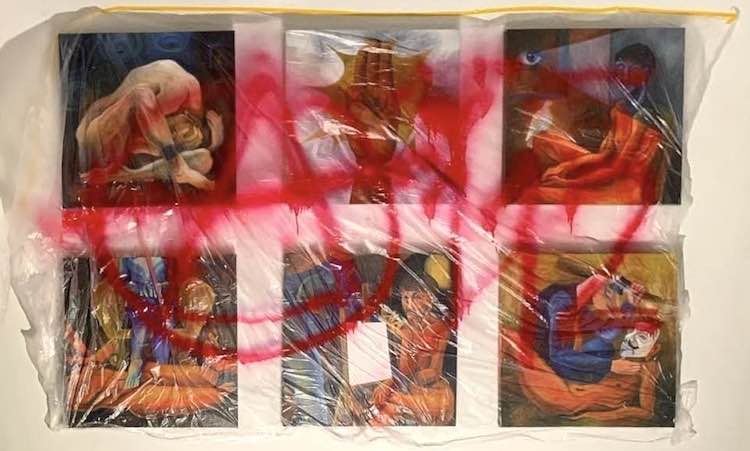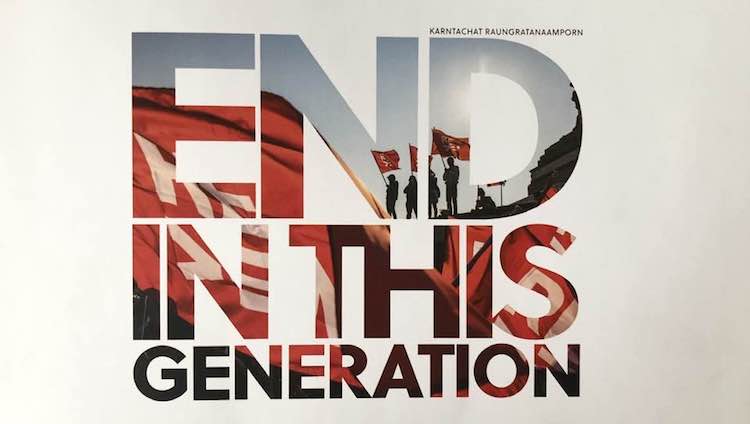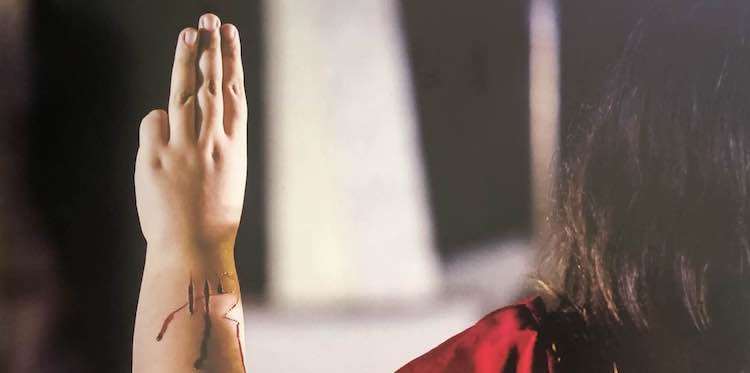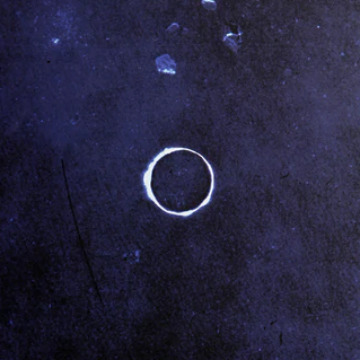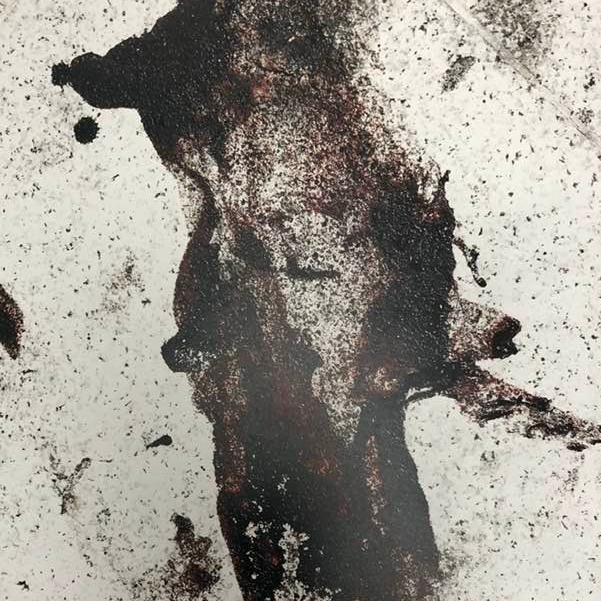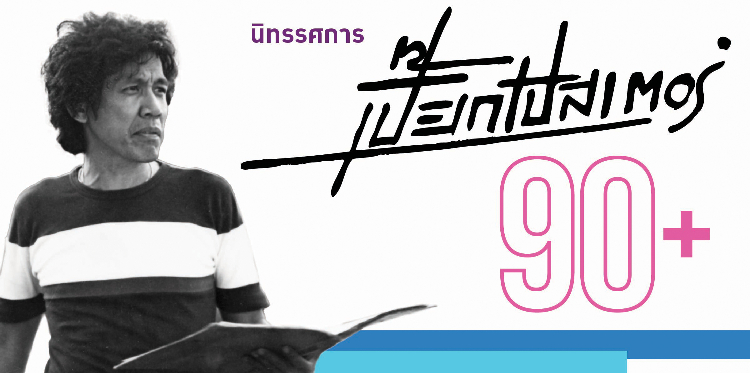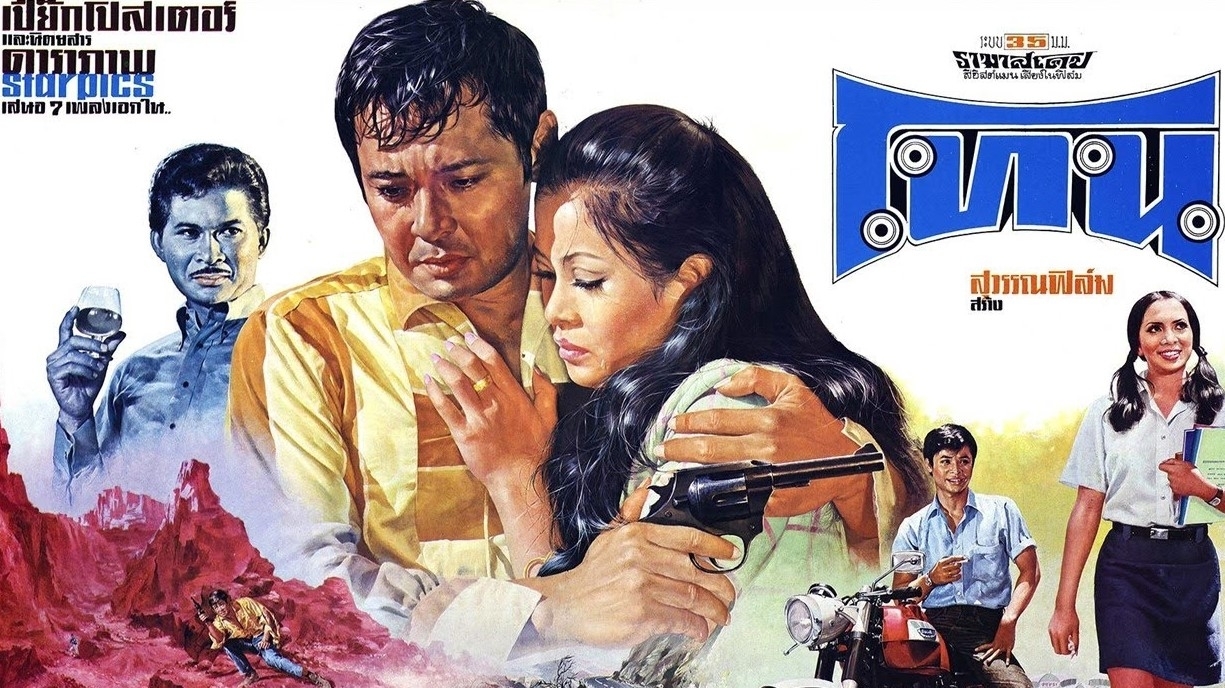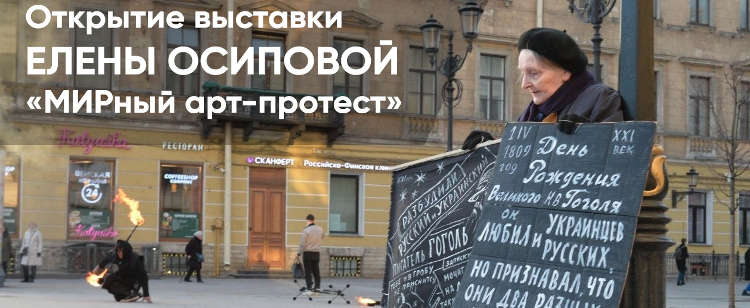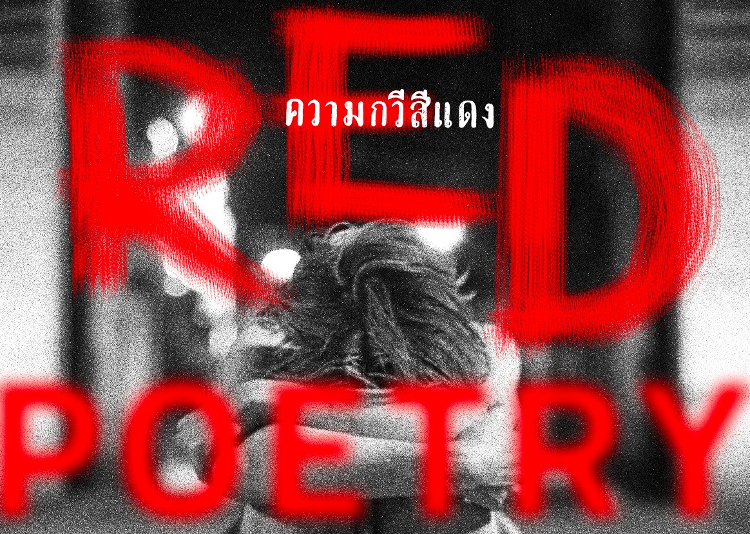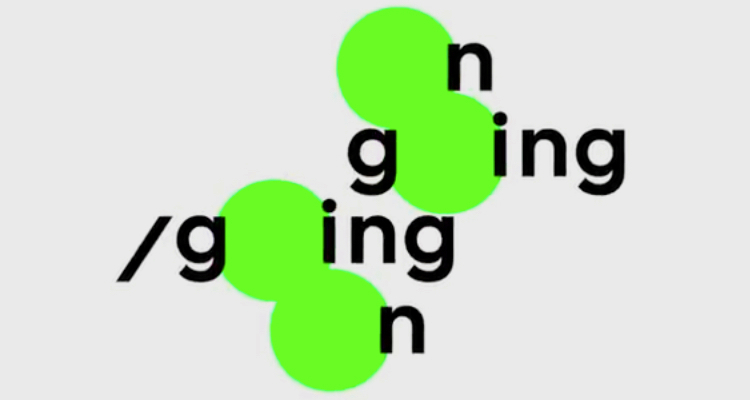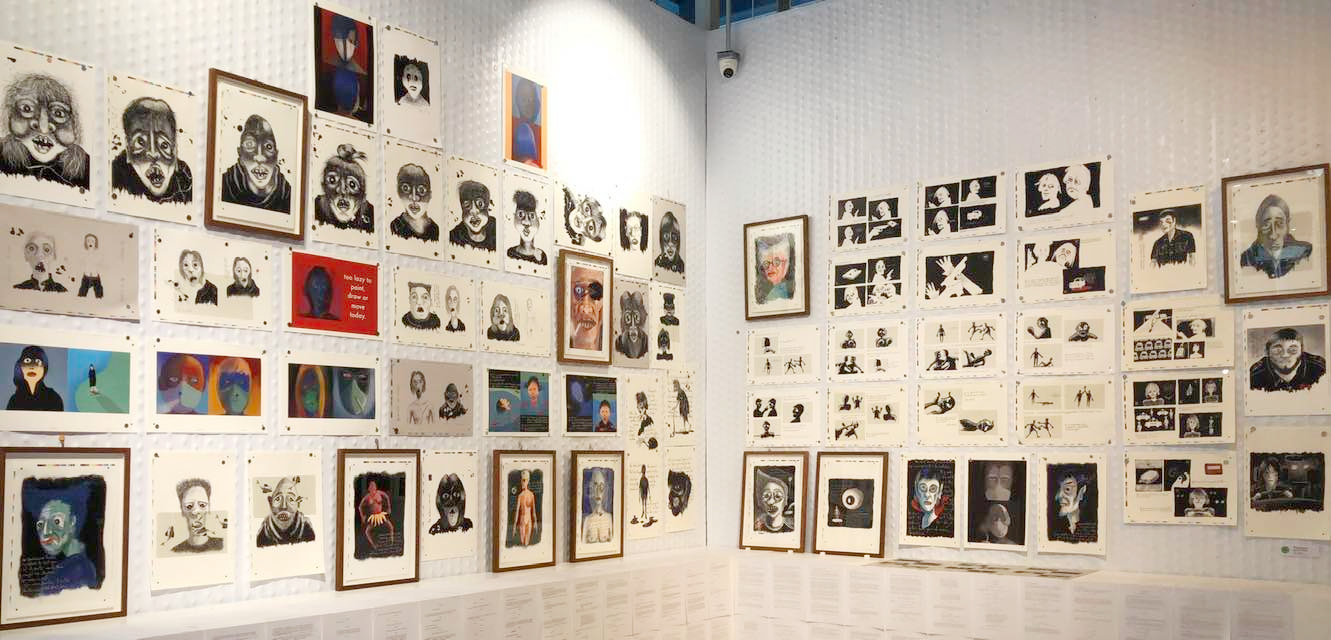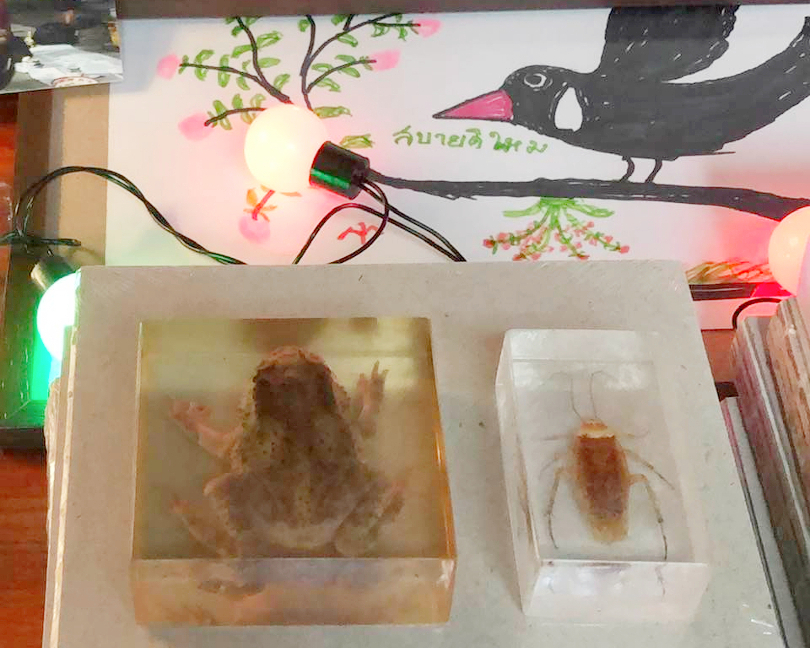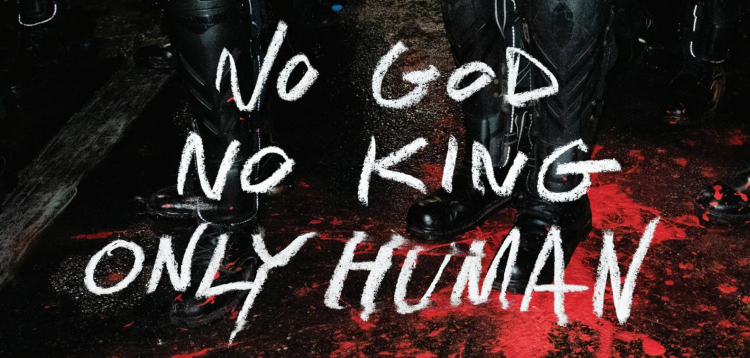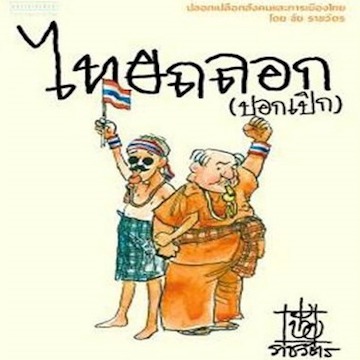
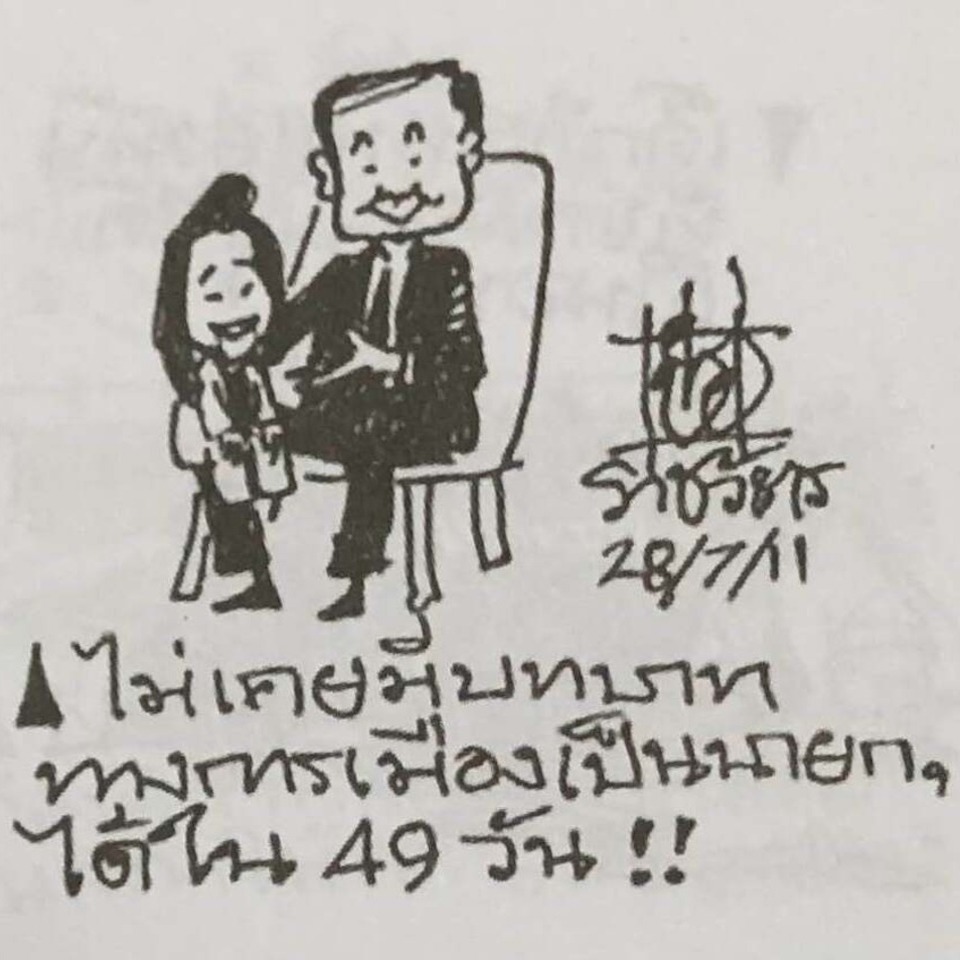
Yingluck Shinawatra became prime minister after winning the 2011 Thai general election, and was removed from office by the Constitutional Court in 2014. The events of her premiership were fodder for veteran political cartoonist Chai Rachawat (the pen name of Somchai Katanyutanan), whose work appears in the country’s most popular newspaper, Thai Rath (ไทยรัฐ). (Chai also illustrated The Story of Tongdaeng/เรื่อง ทองแดง, King Rama IX’s biography of his pet dog.) Chai’s cartoons from 2011 to 2014 are collected in ไทยถลอก (ปอกเปิก) (‘Thailand is badly bruised’), published in 2014.
Yingluck sued Chai for defamation in 2013, after he called her a “อีโง่” in a Facebook post. (The term roughly translates as ‘stupid bitch’.) A book from the same period by cartoonists Buncha/Kamin describes Yingluck using equally offensive language, though it was the viral nature of Chai’s Facebook comment that prompted the lawsuit. Chai occupies the opposite end of the political spectrum to his fellow Thai Rath cartoonist, Sia, who has also published books of his cartoons.
Yingluck sued Chai for defamation in 2013, after he called her a “อีโง่” in a Facebook post. (The term roughly translates as ‘stupid bitch’.) A book from the same period by cartoonists Buncha/Kamin describes Yingluck using equally offensive language, though it was the viral nature of Chai’s Facebook comment that prompted the lawsuit. Chai occupies the opposite end of the political spectrum to his fellow Thai Rath cartoonist, Sia, who has also published books of his cartoons.

